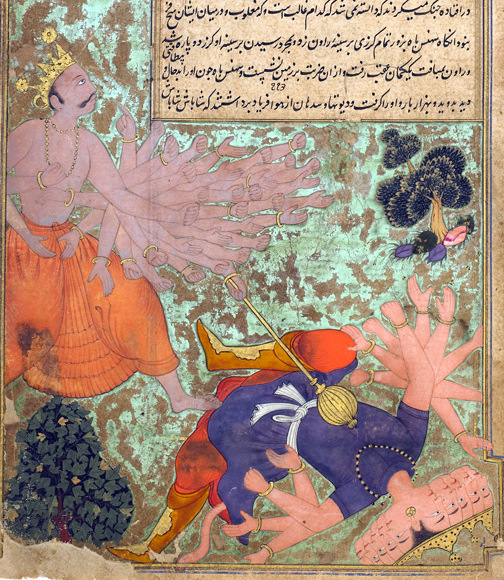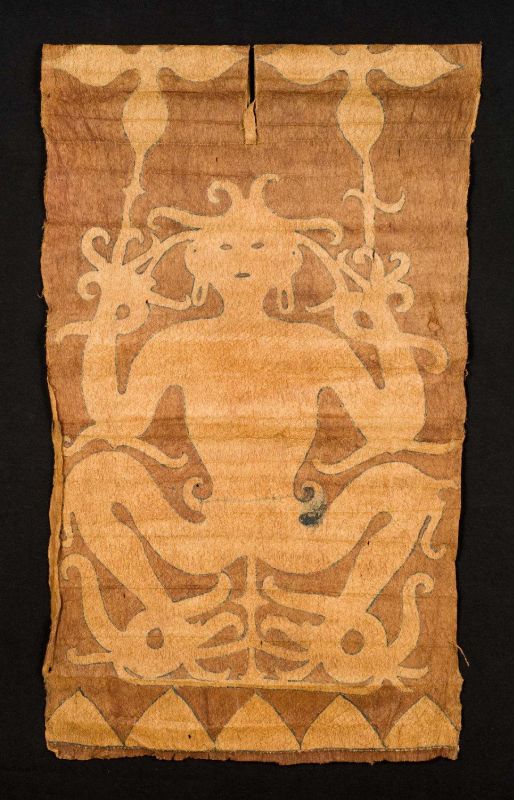|
Agnivanshi
In Indian culture, the Agnivanshi are people who claim descent from Agni, the Vedic god of fire. The Agnivanshi lineage (Agnivansha or Agnikula) is one of the three lineages into which the Rajput clans, the others being the Suryavanshi (descended from Surya, the sun god) and the Chandravanshi (descended from Chandra, the moon god). According to medieval legends, there are four Agnivanshi clans: Chauhans (Chahamanas), Parihars (Pratiharas), Parmars (Paramaras) and Solankis (Chaulukyas). Apart from Rajputs, several other Indian communities and dynasties have legends of fire-born ancestry. Alf Hiltebeitel theorises that the fire-lineage legends signify a new class of Kshatriya warriors, as opposed to the earlier warriors who claimed descent from the solar and lunar lineages mentioned in the ancient texts. Among the clans now known as the Rajputs, the legend might have been invented by Padmagupta, a 10th-century court poet of the Paramara dynasty. His ''Nava-sahasanka-charita'' i ... [...More Info...] [...Related Items...] OR: [Wikipedia] [Google] [Baidu] |
Rajput Clans
Rajput (from Sanskrit ''raja-putra'' 'son of a king') is a large multi-component cluster of castes, kin bodies, and local groups, sharing social status and ideology of genealogical descent originating from the Indian subcontinent. The term Rajput covers various patrilineal clans historically associated with warriorhood: several clans claim Rajput status, although not all claims are universally accepted. According to modern scholars, almost all Rajputs clans originated from peasant or pastoral communities. Lineages Genealogies of the Rajput clans were fabricated by pastoral nomadic tribes when they became sedentary. In a process called Rajputization, after acquiring political power, they employed bards to fabricate these lineages which also disassociated them from their original ancestry of cattle-herding or cattle-rustling communities and acquired the name 'Rajput'. There are three basic lineages (''vanshas'' or ''vamshas'') among Rajputs. Each of these lineages is divided in ... [...More Info...] [...Related Items...] OR: [Wikipedia] [Google] [Baidu] |
Chauhan
Chauhan, historically ''Chahamana'', is a clan name historically associated with the various ruling Rajput families during the Medieval India in Rajasthan. Subclans Khichi, Hada, Songara, Bhadauria, Devda etc. are the branches or subclans of Chauhan Rajputs. Origin The word ''Chauhan'' is the vernacular form of the Sanskrit term ''Chahamana'' (IAST: Cāhamāna). Several Chauhan inscriptions name a legendary hero called Chahamana as their ancestor, but none of them state the period in which he lived. The earliest extant inscription that describes the origin of the Chauhans is the 1119 CE Sevadi inscription of Ratnapala, a ruler of the Naddula Chahamana dynasty. According to this inscription, the ancestor of the Chahamanas was born from the eye of Indra. The 1170 CE Bijolia rock inscription of the Shakambhari Chahamana king Someshvara states that his ancestor Samantaraja was born at Ahichchhatrapura (possibly modern Nagaur) in the gotra of sage Vatsa. The 1262 C ... [...More Info...] [...Related Items...] OR: [Wikipedia] [Google] [Baidu] |
Paramara Dynasty
The Paramara dynasty ( IAST: Paramāra) was an Indian dynasty that ruled Malwa and surrounding areas in west-central India between 9th and 14th centuries. They belonged to the Parmara clan of the Rajputs. The dynasty was established in either the 9th or 10th century, and its early rulers most probably ruled as vassals of the Rashtrakutas of Manyakheta. The earliest extant Paramara inscriptions, issued by the 10th-century ruler Siyaka, have been found in Gujarat. Around 972 CE, Siyaka sacked the Rashtrakuta capital Manyakheta, and established the Paramaras as a sovereign power. By the time of his successor Munja, the Malwa region in present-day Madhya Pradesh had become the core Paramara territory, with Dhara (now Dhar) as their capital. The dynasty reached its zenith under Munja's nephew Bhoja, whose kingdom extended from Chittor in the north to Konkan in the south, and from the Sabarmati River in the west to Vidisha in the east. The Paramara power rose and declined several t ... [...More Info...] [...Related Items...] OR: [Wikipedia] [Google] [Baidu] |
Kshatriya
Kshatriya ( hi, क्षत्रिय) (from Sanskrit ''kṣatra'', "rule, authority") is one of the four varna (social orders) of Hindu society, associated with warrior aristocracy. The Sanskrit term ''kṣatriyaḥ'' is used in the context of later Vedic society wherein members were organised into four classes: ''brahmin'', kshatriya, ''vaishya'' and ''shudra''. History Early Rigvedic tribal monarchy The administrative machinery in the Vedic India was headed by a tribal king called Rajan whose position may or may not have been hereditary. The king may have been elected in a tribal assembly (called Samiti), which included women. The Rajan protected the tribe and cattle; was assisted by a priest; and did not maintain a standing army, though in the later period the rulership appears to have risen as a social class. The concept of the fourfold varna system is not yet recorded. Later Vedic period The hymn ''Purusha Sukta'' to the ''Rigveda'' describes the symbolic creation ... [...More Info...] [...Related Items...] OR: [Wikipedia] [Google] [Baidu] |
Agni
Agni (English: , sa, अग्नि, translit=Agni) is a Sanskrit word meaning fire and connotes the Vedic fire deity of Hinduism. He is also the guardian deity of the southeast direction and is typically found in southeast corners of Hindu temples. In the classical cosmology of the Indian religions, Agni as fire is one of the five inert impermanent elements ('' pañcabhūtá'') along with space (''ākāśa''), water (''ap''), air (''vāyu'') and earth (''pṛthvī''), the five combining to form the empirically perceived material existence (''Prakṛti''). In Vedic literature, Agni is a major and oft-invoked god along with Indra and Soma. Agni is considered the mouth of the gods and goddesses and the medium that conveys offerings to them in a ''homa'' (votive ritual). He is conceptualized in ancient Hindu texts to exist at three levels, on earth as fire, in the atmosphere as lightning, and in the sky as the sun. This triple presence accords him as the messenger between the ... [...More Info...] [...Related Items...] OR: [Wikipedia] [Google] [Baidu] |
Jamadagni
Jamadagni ( sa, जमदग्नि, lit=great fire) is a character in Hindu literature. He is regarded in Hindu tradition to be one of the Saptarishi (Seven Vedic sages) in the seventh, and the current age of Manvantara.Avalon, Arthur (Sir John Woodroffe) (1913, reprint 1972) (tr.) ''Tantra of the Great Liberation (Mahāanirvāna Tantra)'', New York: Dover Publications, , p. xli: The Rishi are seers who know, and by their knowledge are the makers of shastra and "see" all mantras. The word comes from the root rish ''Ri''sh''ati-prāpnoti sarvvang mantrang jnānena pashyati sangsārapārangvā'', etc. The seven great Rishi or saptarshi of the first manvantara are Marichi, Atri, Angiras, Pulaha, Kratu, Pulastya, and Vashishtha. In other manvantara there are other ''sapta-rshi''. In the present manvantara the seven are Kashyapa, ''Atri, Vashishtha, Vishvamitra, Gautama, Jamdagnini, Bharadvaja''. To the Rishi the Vedas were revealed. Vyasa taught the Rigveda so revealed to Paila, ... [...More Info...] [...Related Items...] OR: [Wikipedia] [Google] [Baidu] |
Vishvamitra
Vishvamitra ( sa, विश्वामित्र, ) is one of the most venerated rishis or sages of ancient India. According to Hindu tradition, he is stated to have written most of the Mandala 3 of the Rigveda, including the Gayatri Mantra. The Puranas mention that only 24 rishis since antiquity have understood the whole meaning of —and thus wielded the whole power of — the Gayatri Mantra. Vishvamitra is supposed to have been the first, and Yajnavalkya the last. Before renouncing his kingdom and royal status, Brahmarishi Vishvamitra was a king, and thus he retained the title of Rajarshi, or 'royal sage'. Textual background Historically, Viśvāmitra Gāthina was a Rigvedic rishi who was the chief author of Mandala 3 of the Rigveda. Viśvāmitra was taught by Jamadagni Bhārgava. He was the purohita of the Bharata tribal king Sudās, until he was replaced by Vasiṣṭha. He aided the Bharatas in crossing the Vipāś and Śutudrī rivers (modern Beas and Sutlej ... [...More Info...] [...Related Items...] OR: [Wikipedia] [Google] [Baidu] |
Kamadhenu
Kamadhenu ( sa, कामधेनु, , ), also known as Surabhi (, or , ), is a divine bovine-goddess described in Hinduism as the mother of all cows. She is a miraculous cow of plenty who provides her owner whatever he desires and is often portrayed as the mother of other cattle. In iconography, she is generally depicted as a white cow with a female head and breasts, the wings of a bird, and the tail of a peafowl or as a white cow containing various deities within her body. Kamadhenu is not worshipped independently as a goddess. Rather, she is honored by the Cattle in religion#In Hinduism, Hindu veneration of cows, who are regarded her earthly embodiments. Hindu scriptures provide diverse accounts of the birth of Kamadhenu. While some narrate that she emerged from Samudra manthan, the churning of the cosmic ocean, others describe her as the daughter of the creator god Daksha, and as the wife of the sage Kashyapa. Still other scriptures narrate that Kamadhenu was in the posse ... [...More Info...] [...Related Items...] OR: [Wikipedia] [Google] [Baidu] |
Kartavirya Arjuna
Kartavirya Arjuna ( sa, कार्तवीर्य अर्जुन, ; also known as Sahasrabahu Arjuna or Sahasrarjuna) was a king of an ancient Haihayas kingdom with capital at Mahishmati which is on the banks of Narmada River in the current state of Madhya Pradesh. Kartavirya was son of Kritavirya, king of the Haihayas. According to the Puranas, Haihaya was the grandson of Sahasrajit, son of Yadu. This is his patronymic, by which he is best known; he is also referred to simply as Arjuna. He is described as having a thousand hands and a great devotee of god Dattatreya. One of the several such accounts states that Arjuna conquered Mahishmati city from Karkotaka Naga, a Naga chief and made it his fortress-capital.Pargiter, F.E. (1972) 922 ''Ancient Indian Historical Tradition'', Delhi: Motilal Banarsidass, p.265-7 Almost 100 manuscripts on the worship of Kārtavīrya have been found mostly in the royal libraries of the Hindu Rajas. The states in which the manuscri ... [...More Info...] [...Related Items...] OR: [Wikipedia] [Google] [Baidu] |
Arundhati (Hinduism)
Arundhati ( sa, अरुन्धती, translit=Arundhatī) is the wife of the sage Vasishtha, one of the seven sages ( Saptarshi) of Hinduism. Etymology The name in Sanskrit literally means 'washed from the rays of sun', from 'sun rays', and , 'washed'. Legend Arundhati's birth and life are mentioned in various Hindu scriptures. The birth of Arundhati is found in the Shiva Purana and Bhagavata Purana. The instruction by Brahma to Arundhati is described in the Uttara Kanda of the Ramcharitmanas. The rivalry between Vishvamitra and Vasishtha which leads to the death of her hundred sons is described in the Balakanda of Valmiki's Ramayana. The Mahabharata and several Brahmana works describe her sons, including Shakti, and grandson Parashara. Arundhati's meetings with Sita and Rama are mentioned in the Ramayana, Ramcharitmanas and Vinaya Patrika.Rambhadracharya 1994, pp. ''iii—vi''. Her role in pleading Shiva to marry Parvati is described in the sixth canto of Kuma ... [...More Info...] [...Related Items...] OR: [Wikipedia] [Google] [Baidu] |
Barkcloth
Barkcloth or bark cloth is a versatile material that was once common in Asia, Africa, and the Pacific. Barkcloth comes primarily from trees of the family Moraceae, including ''Broussonetia papyrifera'', '' Artocarpus altilis'', ''Artocarpus tamaran'', and ''Ficus natalensis''. It is made by beating sodden strips of the fibrous inner bark of these trees into sheets, which are then finished into a variety of items. Many texts that mention "paper" clothing are actually referring to barkcloth. Some modern cotton-based fabrics are also named "barkcloth" for their resemblance to these traditional fabrics. Traditional Austronesia Before the development of woven textiles, barkcloth made from trees belonging to the mulberry family (Moraceae) were an important aspect of the pre-Austronesian and Austronesian material culture during the Neolithic period. Stone barkcloth beaters, in particular, are considered part of the "Austronesian toolkit." They have been found in abundance in the ... [...More Info...] [...Related Items...] OR: [Wikipedia] [Google] [Baidu] |
Ikshvaku
Ikshvaku (Sanskrit ; Pāli: ) is a legendary king in Hindu mythology. He is described to be the first king of the Kosala kingdom, and was one of the ten sons of Shraddhadeva Manu, the first man on the earth. He was the founder and first king of the Ikshvaku dynasty, also known as the Suryavamsha, in the kingdom of Kosala, which also historically existed in ancient India. He had a hundred sons, among whom the eldest was Vikukshi. Another son of Ikshvaku's, named Nimi, founded the Kingdom of the Videhas. Rama and the Buddha are also stated to have belonged to the Suryavamsha or Ikshvaku dynasty. He is mentioned in the Vishnu Purana. In Jain texts, it is mentioned that Rishabhadeva is the same as King Ikshvaku (son of Nabhiraja). Except for Munisuvrata and Neminatha, the remaining Jain Tirthankaras are believed to have been royals of the Ikshvaku lineage. Origin From Kashyapa, through Aditi, Vivasvan was generated, and from him came Shraddhadeva Manu, who was born from the womb of ... [...More Info...] [...Related Items...] OR: [Wikipedia] [Google] [Baidu] |



_Hindu_puja%2C_yajna%2C_yagna%2C_Havanam_in_progress.jpg)




